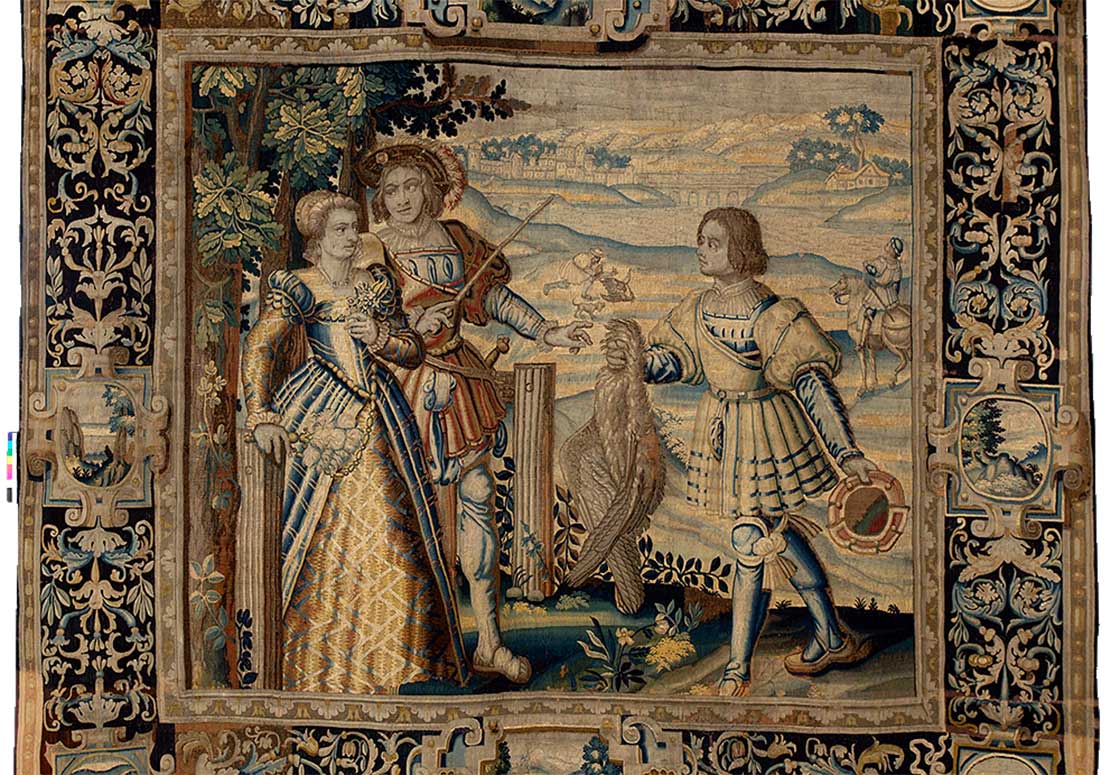The fragile stag
In the Middle Ages, the stag was considered a virtuous animal. It symbolizes the figure of Christ: the fall and regrowth of its antlers (between May and August) recalls the death and resurrection of the Lord. The "fragile stag", an allegory from the writings of St. Augustine, recalls the connections between the animal, pursued by the hunter, and man, dominated by his passions. This tapestry, preserved until 1968 in the castle of Touffou (Vienne), illustrates the fable taken up in the sixteenth century by the French poet Jean Passerat (1534-1602). The decoration composed of plant and aquatic motifs evokes a lush landscape, comparable to the Garden of Eden. A couple armed with swords seems to sound the beginning of the hunt with a bone horn.
In the foreground, a woman from the nobility is accompanied by hunting dogs. On one of them, the word "gluttony" is woven. In the same way, human figures respond to the terms "boredom", "youth" or "false reports". Beyond a representation of hunting in the sixteenth century, this tapestry offers a vision of moral character.


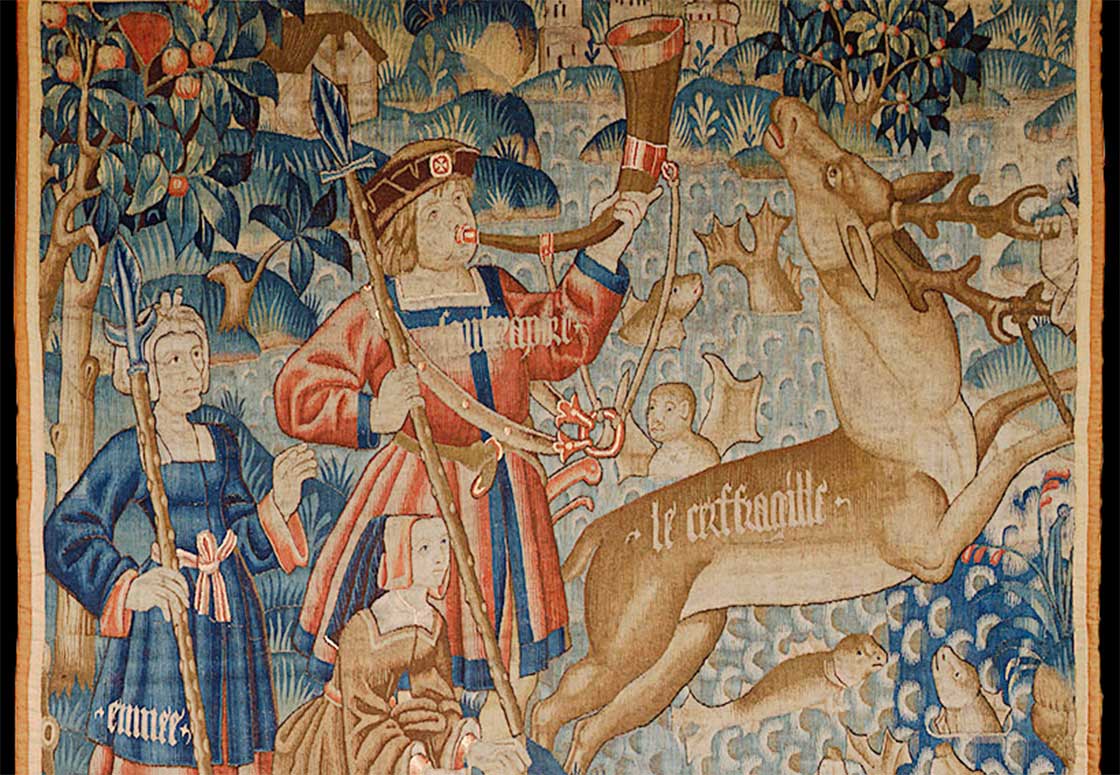
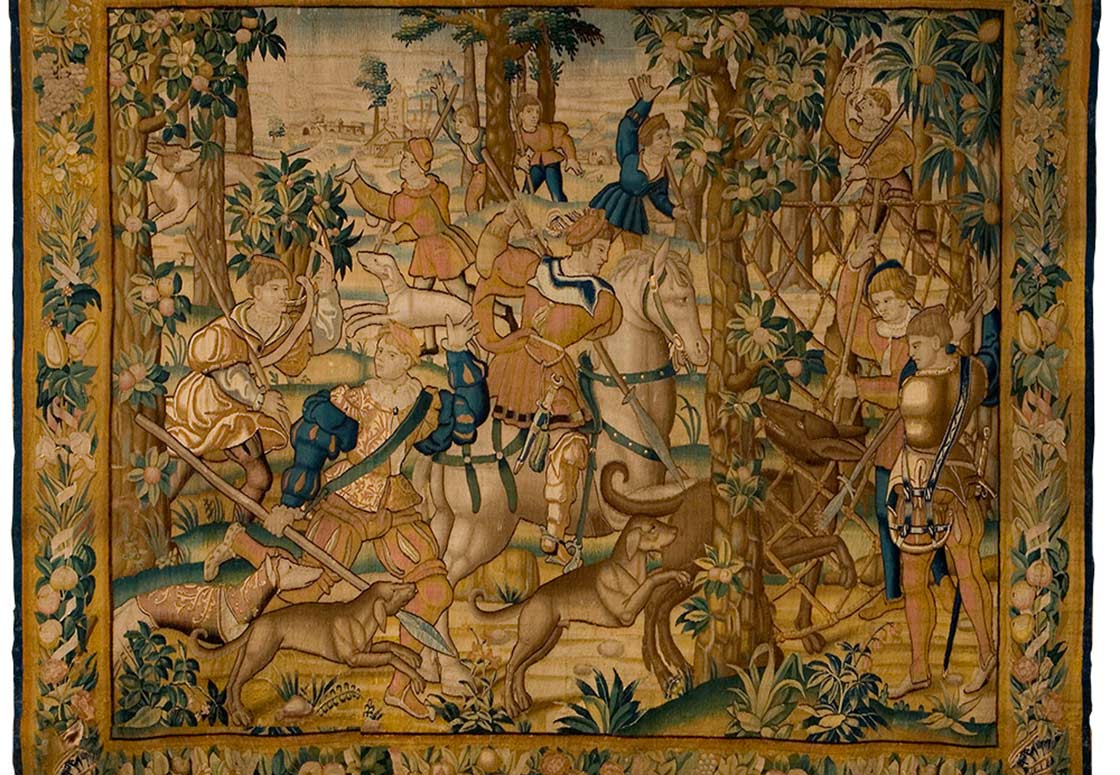
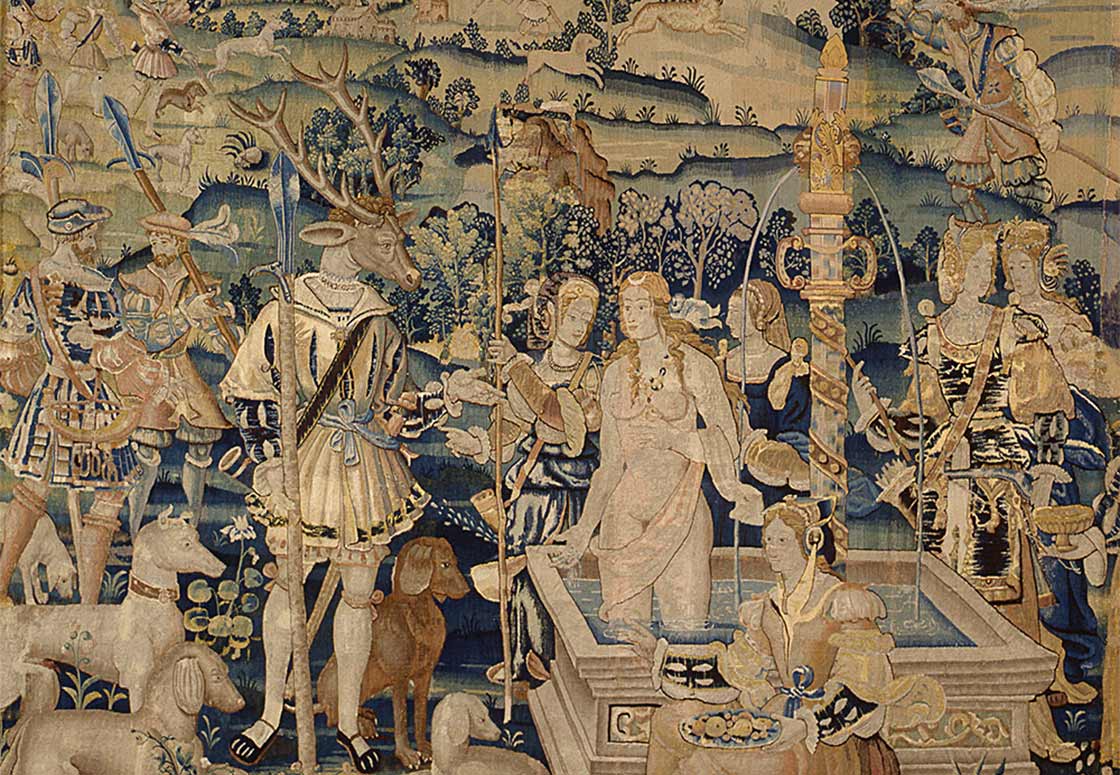
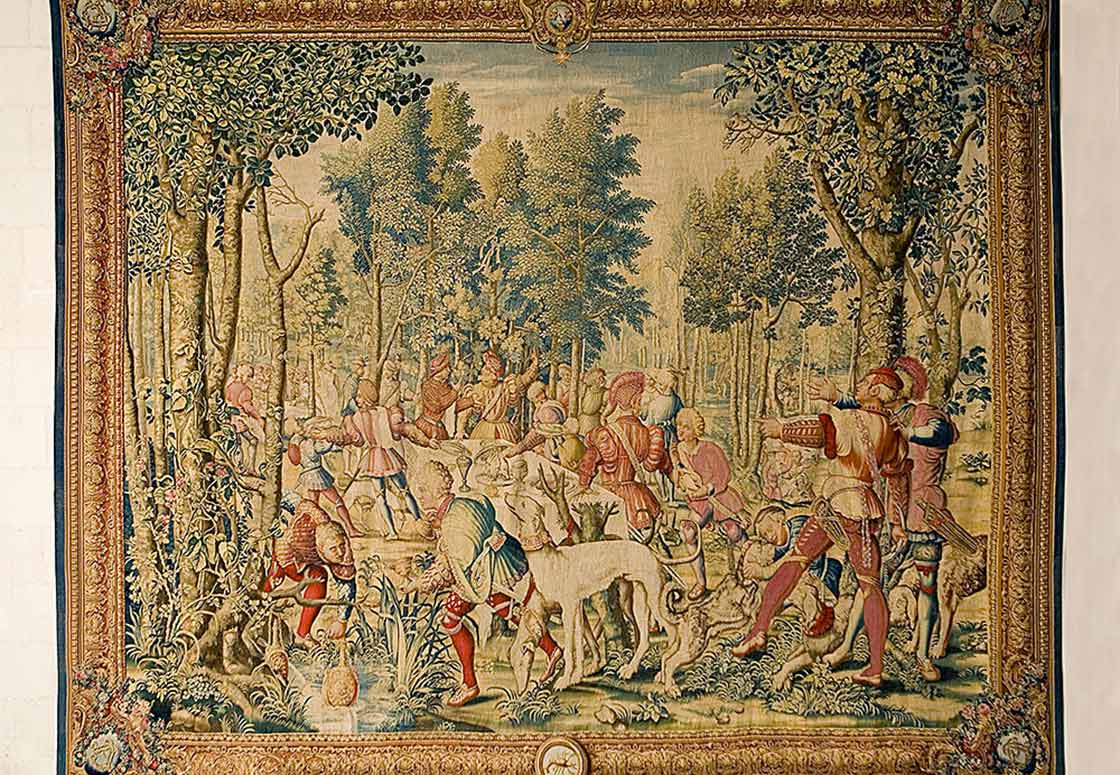
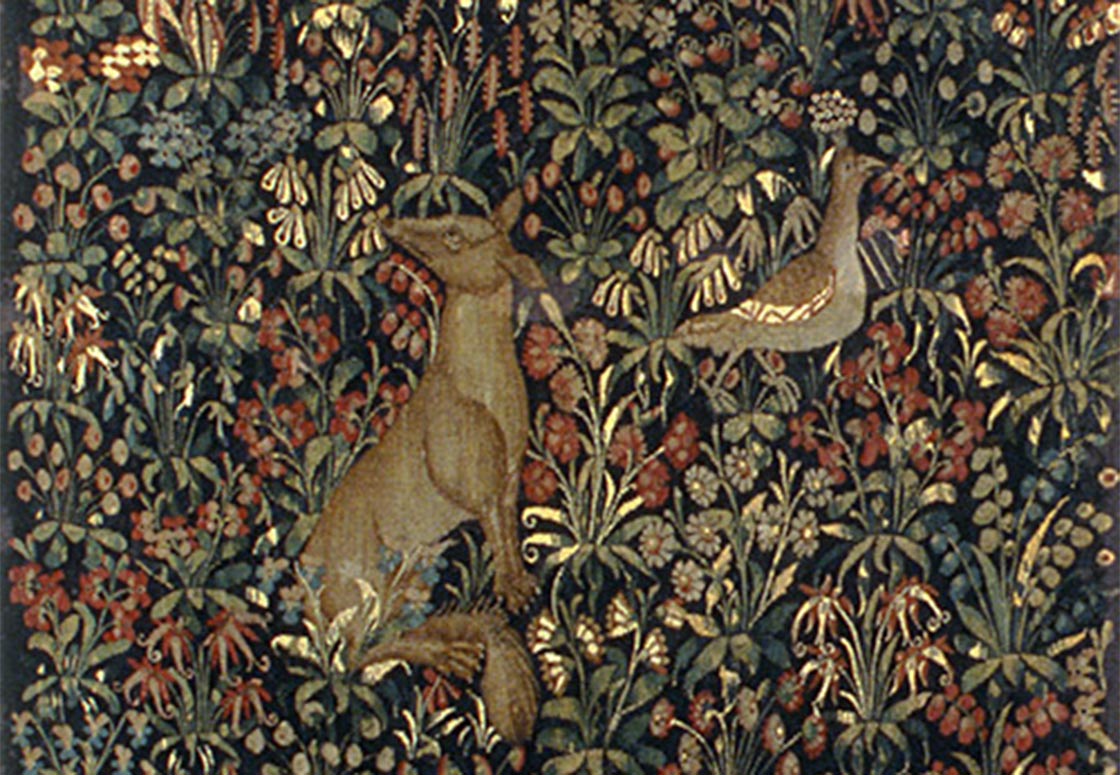
-Sylvie-Durand.jpg)
